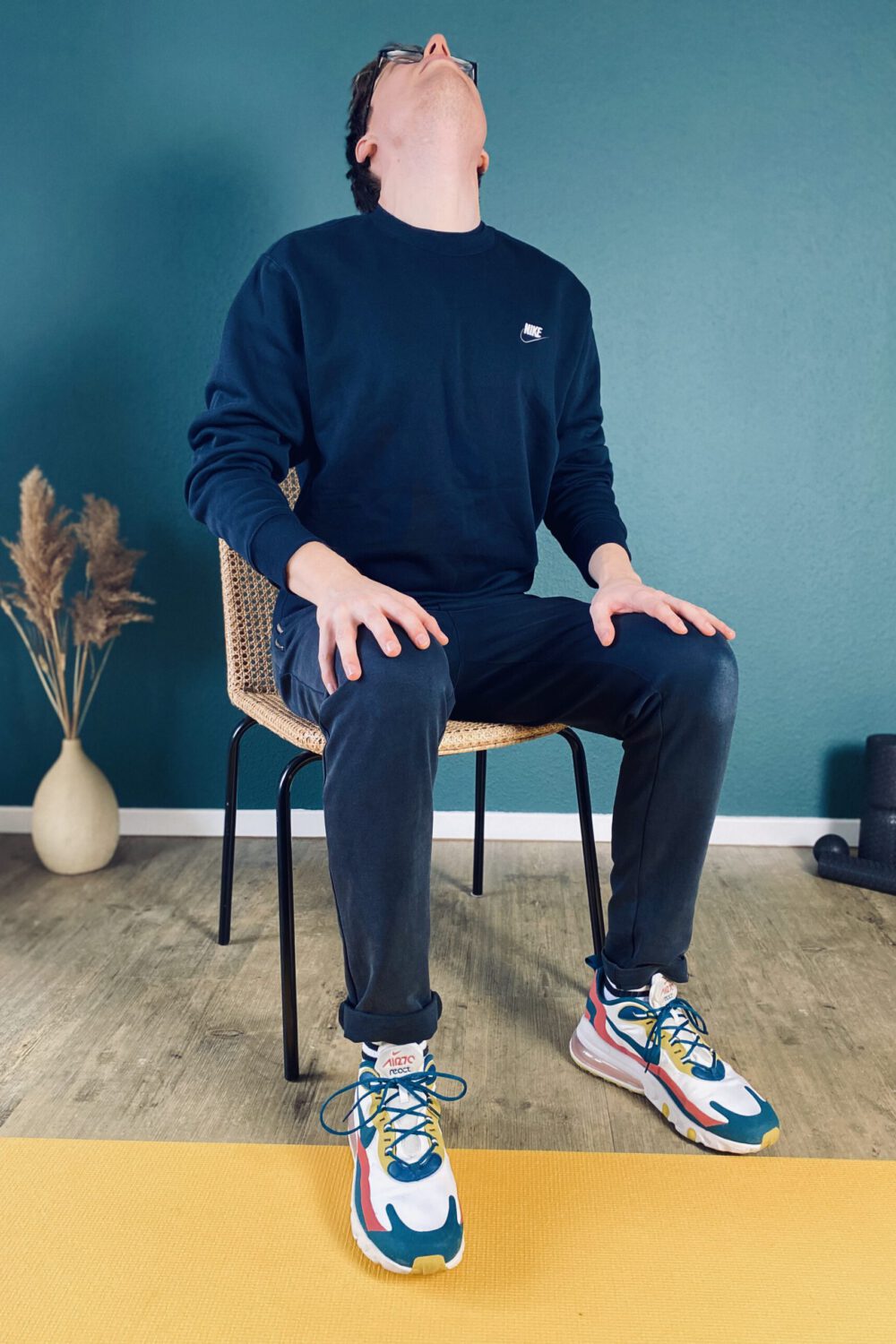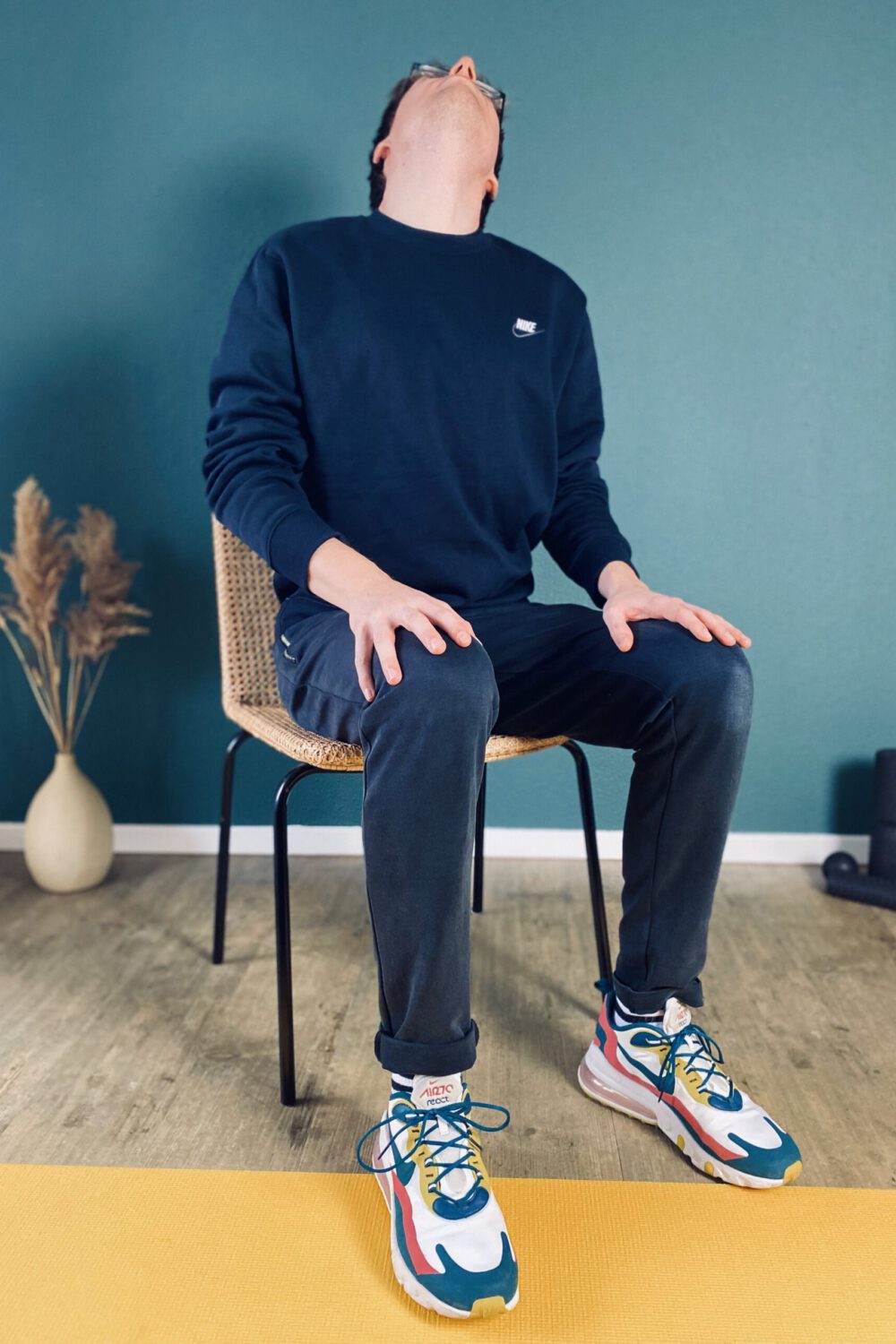Neck Pain Exercises
Suffering from neck pain?
Follow our simple stretching exercise program.
Suffering from neck pain?
Follow our simple stretching exercise program.
Throughout the day we spend hours and hours on our phone or looking down on our computer and keyboard. Most of us suffer from neck pain or even stiffness that often radiates down towards the shoulder blade area and upper back.
In many cases, this is due to poor posture and can be fixed with a few very simple yet effective neck stretching exercises for a tight neck pain! We show you four neck pain exercises that can take away your tension.
All of those exercises can easily be done at home within a few minutes. It is important to start slowly and gradually increase the intensity of the stretches as your flexibility improves. Follow our program and help your neck pain!
Typical Symptoms of Neck Immobility
EXERCISES AND STRETCHES FOR NECK PAIN
Neck pain can sometimes go away on its own after a few days or weeks. However, many people experience neck and shoulder tension on a regular basis. The symptoms of neck pain are usually harmless and easy to treat.
Follow Jo's stretching routine on video or set your own pace by using our photo instructions below.
Good posture is important for us for a number of reasons. It reduces muscle pain, improves joint health, and helps with balance and coordination.
If you have to sit for long periods of time, take breaks every 20-30 minutes to stand up and move around. That will help you to avoid neck pain from poor posture.
Neck stretching exercises improve neck mobility and flexibility by elongating the muscles and tendons, reducing muscle tension, improving circulation, and promoting relaxation.
Easy actions like the shoulder check when driving can literally become a pain without a good enough neck mobility.
Common symptoms of hyperlordosis, also called hollow back, are pain in theck neck, shoulders and even upper back. The body tries to compensate the inward curve of the spine by pulling the neck muscles harder.
Neck stretching exercises can help reduce muscle tension and tightness caused by hollow back.
Tight muscles in the neck, shoulder are or upper back can contribute to neck pain. Exercises that stretch these muscles can help improve flexibility and reduce the tension caused by wrong posture and sitting.
When you sit or stand, make sure to keep your spine in a neutral position to prevent neck muscles from tightening.
Before beginning any exercises provided on this website, it is advised to consult a health professional, such as a physical therapist or chiropractor.
The exercise instruction and advice presented are in no way intended as a substitute for medical consultation. As with any exercise program, if at any point during your workout you begin to feel faint, dizzy, or have physical discomfort, you should stop immediately and consult a physician or doctor.
workouts
Total Exercise Time
Not Needed
A few important things before we begin. In order to do effective and qualitative stretches for neck pain, you must ensure a correct starting position. This applies to any of the following exercises.
Not sure if you are doing it right? Follow the posture on the image:


STEP 1
Bring your chin down to your chest and hold this position for 5-10 seconds.
STEP 2
Then bring your head up slowly and look all the way towards the ceiling and hold again for 5-10 seconds. Make sure your neck is in a straight plane and your head is not turning.
STEP 3
Repeat this exercise a few more times.


STEP 1
Bring your chin down to your chest, just as you did as a starting position for the warm-up.
STEP 2
Keep the chin close to your body and rotate your head slowly and as much as you can to the left - with your nose trying to touch your shoulder.
STEP 3
Once you reach the position from step 2, tilt your head back until you feel a good stretch on the right backside of your neck.



STEP 4-7
Rotate your head in a big circle slowly back into the starting position from step 1.
Repeat this exercise a few more times and rotate your head both left and right.




STEP 1
Bend your left arm and pull it down as if you would try to touch the floor with your elbow. This will make your left shoulder go down.
STEP 2
Put your right hand above your head and hold on to the left side of your head. Then, rotate your head about 45 degrees to the right.
STEP 3
Pull your right arm over to the side so you feel the stretching on the left backside of your neck. Breathe steadily and try stretching a little bit more every time you breathe out.
But take it easy. Stop stretching if you feel too much tension.
STEP 4
Repeat the same exercise with the other side. This time bend your right arm and put your left hand above your head.
Feel the stretch on the right backside of your neck.



STEP 1
Bend your left arm and pull it down as if you would try to touch the floor with your elbow. This will make your left shoulder go down.
STEP 2
Put your right hand above your head and hold on to the left side of your head. This time, do not rotate your head but keep it facing straight.
STEP 3
Pull your right arm over to the side so you feel the stretching on the left side of your neck. Breathe steadily and try stretching a little bit more every time you breathe out.
But take it easy. Stop stretching if you feel too much tension.
STEP 4
Repeat the same exercise with the other side. This time bend your right arm and put your left hand above your head.
Feel the stretch on the right side of your neck.



Neck pain is a common condition that can affect people of all ages. It is defined as pain in or around the neck, and can range from mild to severe. Neck pain can be accompanied by other symptoms, such as stiffness, headache, and numbness or tingling in the arms or hands. In some cases, neck pain can be so severe that it interferes with daily activities.
Our neck is a complex part of the body consisting of multiple muscles, located to the left and right of the cervical spine. The 7 stacked vertebrae within our neck connect our skull with the upper back at about shoulder level.
This structure allows us to move our head in almost all kinds of directions. Other parts of our body, such as the knee or our fingers, are rather limited in terms of mobility. Our head, however, can rotate, move up, down and to either side, making it very easy for us to have the best field of vision possible.
The flexibility that comes with this design generates certain challenges though. Almost any daily posture requires the neck to support and stabilize our heavy head. No matter if we sit, stand or walk, it is the muscles in our neck that are constantly working. Otherwise, our head would just topple over on the side.
Understanding what causes neck pain is the foundation for a painless life. Only if we know the reasons behind it, we are able to do neck pain exercises that can help fix these issues.
Neck pain is usually the result of tense muscles left and right to the spine. The neck reacts with painful cramps after long periods of poor posture, cold drafts, or even sleeping incorrectly. In some cases, sudden head movements can lead to muscle tension and stiffness for multiple days. Activities causing neck tension are typically:
Neck pain is rarely confined to the neck area alone. Neck tension often spreads to our shoulders, upper back, and head - a condition most of us are very well aware of.
Find out who we are and why we think that a pain-free life is possible for everyone!